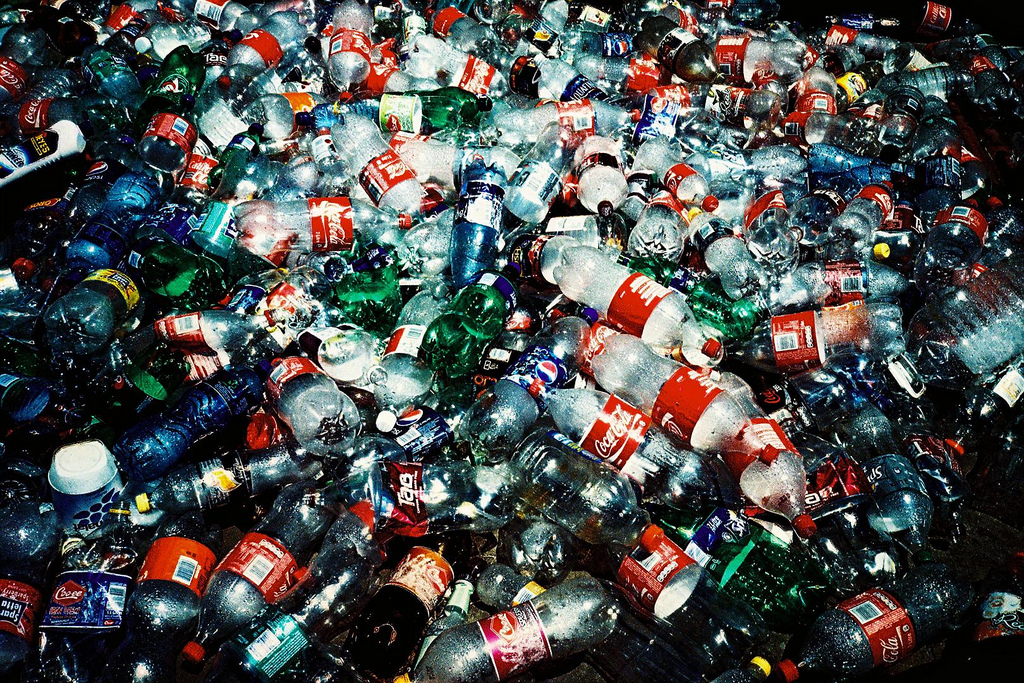From pv magazine International.
A team of U.S. researchers has presented a new approach to plastic waste treatment.
A paper published by the American Chemical Society showed how researchers from Indiana’s Purdue University extracted pure carbon from plastic waste and turned it into anode material for lithium-ion batteries which powered a toy truck. The team claims that the method can be scaled easily. If so, plastic waste could find a hungry offtaker for its upcycled products in the PV industry, as collocated storage is becoming commonplace. Also, the uptake in electric vehicles could create a sizable market for such anodes.
The method produced battery anodes that perform competitively with commercially available products, the researchers claim.
Hundreds of millions of tones of plastic are produced worldwide each year with most of it – more than 85% – making its way to landfill or the ocean. Landfilling plastic releases toxic chemicals into the environment and much of it still ends up in the seas. Plastics are expected to outweigh fish in the world’s oceans by 2050.
Polyethylene (PE) in particular, with colorants, dyes, labels, and sticky additives, increases the difficulty of recycling and energy recovery from incineration is low and expensive, as air emissions controls are needed and byproduct ashes are often a hazardous waste.
Efficient chips
The Purdue team immersed high and low-density PEs – namely, Ziploc bags and other household plastics – in sulfuric acid H2SO4 at a ration of 1g to 20ml. The mixture was then placed in a solvothermal Parr reactor and heated at 110 degrees Celsius for 12 hours, lower than the temperature at which PEs transform into hazardous gases without converting into a valuable carbon product – 115-135 degrees Celsius – according to the researchers.
After the reaction, carbon flakes which had built in the reaction vessel were washed with de-ionized water and left to dry. The product was then carbonized in a crucible at 900 degrees celsius under an Argon flow. The resulting material was treated in an agate mortar, to form a powder. The method produced a mass yield of 65±5% for low-density PEs and 54±3% for high-density materials.
The powder was then pressed into carbon chips to be used in Li-ion battery anodes which produced a 230 and 350 mAh/g specific capacity – for low and high-density PEs respectively – when cycled at room temperature at a C-rate of five. The anodes produced 290 and 440 mAh/g capacity when cycled at 50 degrees Celsius.
In cycling studies, the researchers found a slight increase in capacity to 350 and 440 mAh/g (at 25 and 50 degrees Celsius, respectively for HDPE-C) was recorded at a C-rate of five. At a C-rate of one, 1 h charging and 1 h discharging, the capacity dropped to 160 and 210 mAh/g (at 25 and 50 degrees Celsius, respectively) for LDPE-C and 240 and 270 mA h/g (at 25 and 50 degrees Celsius) for HDPE-C.
Breakthrough method
The long cycle stability of the carbon sample was studied through a cycling rate of five. After an initial 20 cycles, a stable reversible capacity of 200 mAh/g was achieved for both LDPE-C and HDPE-C.
The scientists say their paper is the first report which demonstrates a solvothermal sulfonation process followed by thermal treatment that successfully converted waste plastics to functional, energy storing carbons.
PE has a high carbon content of 86% and other researchers have suggested various approaches to retrieving the carbon from it, with just over 50% weight yields.
According to the Purdue paper, such limited quantities meant a lack of potential applications for carbon recovered from PE. The carbonaceous materials now produced were also studied as potential anodes for sodium-ion batteries and as lubrication additives and carbon nanotubes.
Previous attempts to retrieve carbonaceous materials from hydrocarbons were expensive and complex to scale-up. “Our solvothermal upcycling approach totally gets rid of plastic waste, converting them into functional carbonaceous materials for multiple applications including battery anodes,” wrote the authors in their research paper.
This content is protected by copyright and may not be reused. If you want to cooperate with us and would like to reuse some of our content, please contact: editors@pv-magazine.com.









By submitting this form you agree to pv magazine using your data for the purposes of publishing your comment.
Your personal data will only be disclosed or otherwise transmitted to third parties for the purposes of spam filtering or if this is necessary for technical maintenance of the website. Any other transfer to third parties will not take place unless this is justified on the basis of applicable data protection regulations or if pv magazine is legally obliged to do so.
You may revoke this consent at any time with effect for the future, in which case your personal data will be deleted immediately. Otherwise, your data will be deleted if pv magazine has processed your request or the purpose of data storage is fulfilled.
Further information on data privacy can be found in our Data Protection Policy.